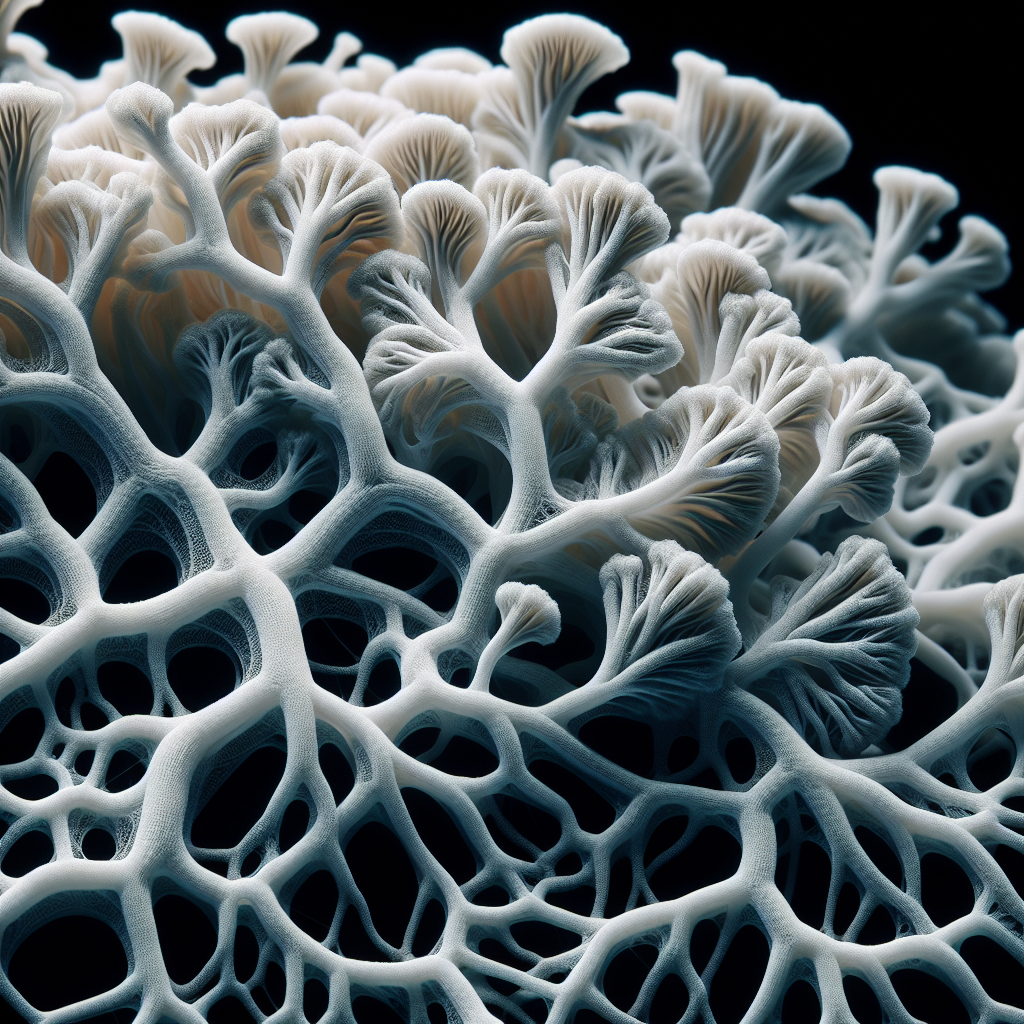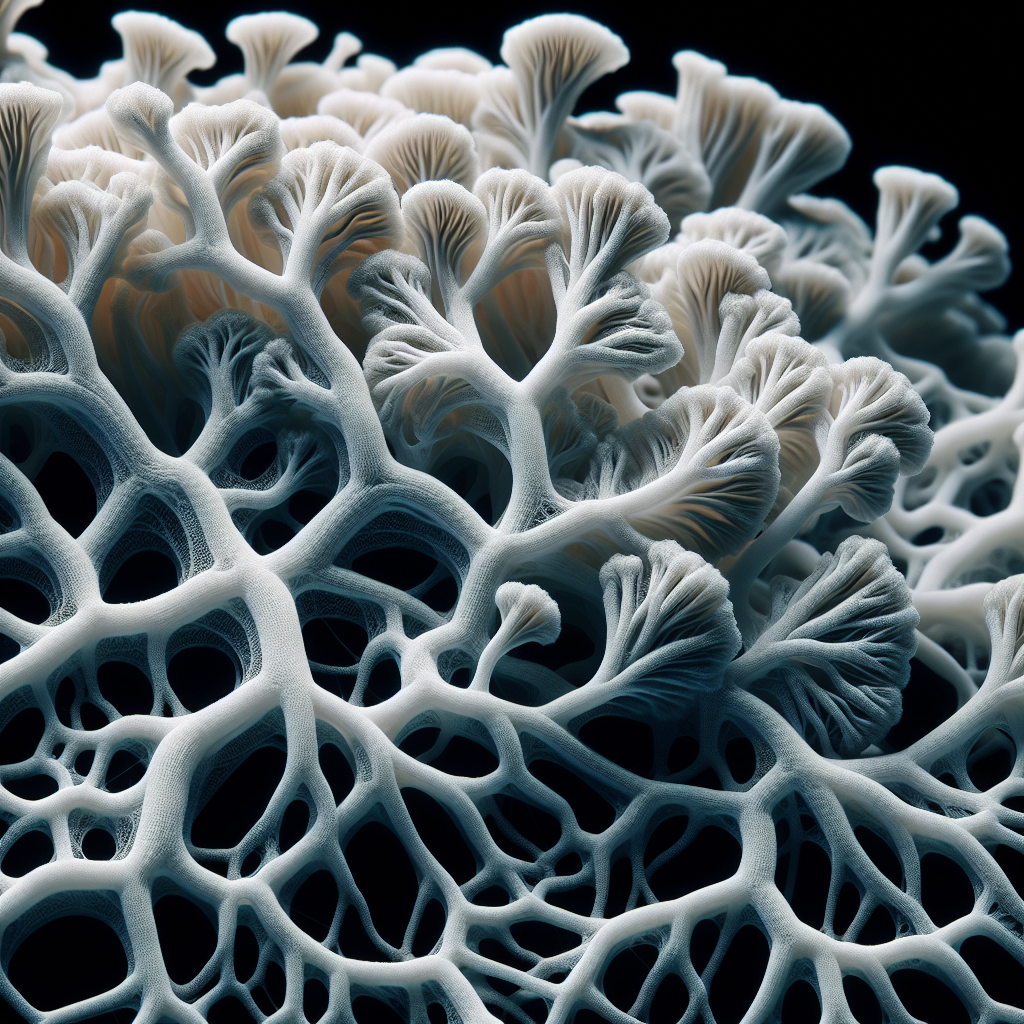In “The Indepth Exploration of Oyster Mycelium,” you will unravel the intricacies and marvel at the wonders of the world of fungal networks. As you embark on this informative journey, you’ll gain a heightened understanding of the oyster mycelium, its complex structure, and notable functionalities. The article elaborately discusses its cultivation and relevance in various industries from environmental remediation to gastronomy, thereby showcasing the mycelium’s multipurpose nature. Enlighten yourself on the fascinating dynamics of this filamentous fungus, a cornerstone of nature’s resilient recycling system.

Understanding Oyster Mycelium
Understanding the basics of Oyster Mycelium can help clarify its significant role in different ecosystems and industry.
Definition of Oyster Mycelium
Oyster Mycelium consists of the vegetative part of the Oyster mushroom, known scientifically as Pleurotus ostreatus. It is a thread-like network of cells that grows below the surface, forming the foundation of the mushroom’s life cycle. The mycelium serves the role of extracting nutrients from the substrate, enabling the mushroom to grow and develop.
The Importance of Oyster Mycelium
Oyster Mycelium holds significant importance in terms of ecological, industrial, and health-related values. It plays a vital role in breaking down organic matter. This process helps in the return of nutrients to the soil, assisting in the improvement of soil fertility, and contributing to the recycle of organic compounds in the ecosystem. Additionally, they offer tremendous potential for use in environmental remediation due to their enzymatic activity.
Natural Habitat of Oyster Mycelium
Oyster Mycelium is found worldwide, with its natural habitat often being hardwood trees, where it helps decompose fallen wood or living trees. Though it can grow in a variety of climates, it thrives in the colder months of the year when temperatures are lower.
Lifecycle of Oyster Mycelium
Understanding the life cycle of Oyster Mycelium brings us closer to appreciating their impact on ecosystems and their use in mushroom cultivation techniques.
Spore Germination
The life cycle of Oyster Mycelium begins with spore germination. The spores fall from the mature fruiting bodies, landing on a suitable substrate. They start germinating, forming microscopic, thread-like structures known as hyphae.
Mycelial Growth
After the spores have successfully germinated, they form into mycelium, the vegetative part of the fungus. Through branching and extension, the mycelium begins colonizing the substrate where it feeds by extracting nutrients from it.
Fruiting Body Formation
Over time, under suitable environmental conditions, the mycelium aggregates and compacts to form the fruiting bodies, which we know as mushrooms. This is the reproductive structure which helps the fungus in dispersing its spores.
Spore Production and Dispersal
The mature mushroom produces and releases millions of spores, thus completing the lifecycle of the oyster mycelium and starting a new one.
Cultivating Oyster Mycelium
Oyster mycelium, because of its adaptability and resilience, is popular among beginner and experienced cultivators alike.
Choosing the Right Substrate
The first step in the cultivation of Oyster Mycelium is selecting an appropriate substrate. Popular choices include straw, wood pellets, and coffee grounds.
Inoculating the Substrate
Once the substrate has been prepared, it is then inoculated with either spores or mycelium. This process is essentially introducing the oyster mycelium into the substrate, allowing it to colonize and absorb the nutrients it needs for growth.
Maintaining Ideal Growing Conditions
Growing conditions such as temperature, humidity, and light are crucial to successful cultivation. These need to be monitored regularly for optimum mycelium growth and mushroom production.
Monitoring Mycelial Growth
Monitoring the progress of mycelial colonization is essential. Signs such as the substrate becoming densely white indicate successful colonization.
Benefits of Oyster Mycelium
Environmental Benefits
The most notable environmental benefit of Oyster Mycelium is its ability to break down various pollutants. This makes it a beneficial player in bioremediation efforts.
Health and Nutritional Benefits
Oyster mushrooms, the fruiting body of the mycelium, are rich in protein, vitamins, and other nutrients, making them a healthy dietary choice.
Industrial Uses
Because of their properties, Oyster Mycelium has various industrial uses, including the production of enzymes used in textile and paper industries.
Agricultural Uses
In agriculture, Oyster Mycelium contributes to the breakdown of plant matter and improves soil fertility by recycling nutrients.

Oyster Mycelium in Bioremediation
Understanding Bioremediation
Bioremediation is an ecological method to clean up polluted environments using organisms that can detoxify harmful substances.
Role of Oyster Mycelium in Bioremediation
Oyster Mycelium, through its impressive enzymatic activity, can break down various pollutants. This makes it highly valuable in bioremediation projects.
Case Studies
Several case studies attest to the efficiency of Oyster Mycelium in bioremediation. For instance, its use in the cleanup of oil spills and contaminated soil environments stands out most notably.
Commercial Production of Oyster Mycelium
Large Scale Cultivation Techniques
commercial cultivation of Oyster Mycelium typically involves large-scale methods. Techniques like pasteurization and conditioning are employed to ensure optimal growth conditions.
Challenges in Commercial Production
Despite the benefits, commercial production of Oyster Mycelium is not without challenges. These can range from contamination during cultivation to market acceptance of non-traditional mushroom products.
Market Trends and Opportunities
Commercial cultivation and processing of Oyster Mycelium are on the rise, indicating a trend that’s poised for growth. Opportunities include the use of mycelium in manufacturing environmentally friendly products.
Health Risks Associated with Oyster Mycelium
Mycotoxin Production
While not common, certain conditions can trigger oyster mycelium to produce toxic compounds known as mycotoxins.
Allergic Reactions
Some individuals may have allergic reactions to Oyster Mycelium exposure. The signs and symptoms can range from mild to severe.
Food Safety Concerns
There have been occasions where presence of heavy metals had been detected in Oyster mushrooms. This raises food safety concerns if mushrooms are grown in contaminated substrates.
Oyster Mycelium vs Other Types of Mycelium
Comparing Growth Rate
While growth rates depend on many variables, Oyster Mycelium generally grows faster compared to other types of mycelium.
Substrate Preference
Oyster Mycelium is highly adaptable and versatile regarding the choice of substrate. It is capable of colonizing and breaking down a wide range of organic materials, unlike some other species.
Resistance to Contaminants
Oyster Mycelium shows excellent resistance to contamination, making it a favorite among mushroom cultivators.
Future of Oyster Mycelium
Advancements in Cultivation Techniques
Technological advancements present innovative cultivation techniques, which promise to enhance the efficiency, yield, and quality of Oyster Mycelium farming.
Expanding Commercial Uses
With increased consumer awareness, the demand for Oyster Mycelium as a sustainable, healthy food source, as well as an industrial bioproduct, will likely continue to grow.
Potential for Biotechnological Applications
Oyster Mycelium has potential in the field of Biotechnology, especially in the development of eco-friendly materials through mycotechnology.
Preservation and Storage of Oyster Mycelium
Methods of Preservation
Several methods, like freeze drying, pressure canning or keeping in a sterile growth medium can be used to preserve Oyster Mycelium.
Long-Term Storage
For long-term storage, Oyster Mycelium strains can be stored under specific conditions using state-of-the-art techniques such as cryopreservation.
Reviving Stored Mycelium
Reviving the mycelium involves introducing the preserved mycelium stock back into a nutrient-rich environment where it can regrow and propagate.
Unraveling the world of Oyster Mycelium uncovers a remarkable nature’s mechanism that holds promise for a more sustainable future with extensive applications across different fields. Whether engaged in cultivating mushrooms at home, researching on bioremediation or developing new biotechnologies, understanding Oyster Mycelium is the first step towards harnessing its potential.
